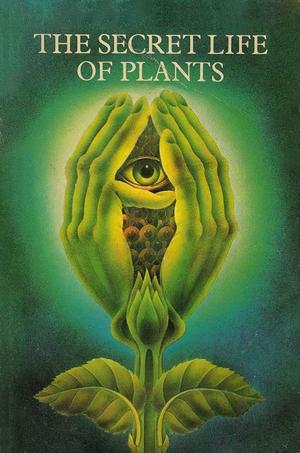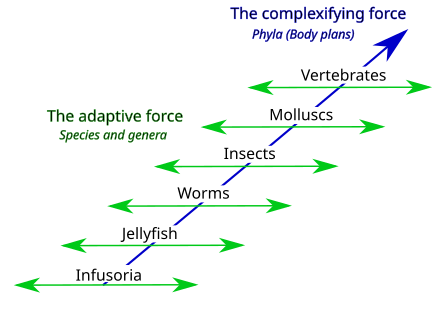Home › Forum Online Discussion › General › Breakthrough study shows how plants sense the world (article)
- This topic has 2 replies, 1 voice, and was last updated 6 years, 6 months ago by
c_howdy.
-
AuthorPosts
-
February 8, 2018 at 12:10 am #51681
c_howdy
Participant
January 19, 2018 by Jeff Hansen, University of Alabama at Birmingham
https://phys.org/news/2018-01-breakthrough-world.html
Plants lack eyes and ears, but they can still see, hear, smell and respond to environmental cues and dangers—especially to virulent pathogens. They do this with the aid of hundreds of membrane proteins that can sense microbes or other stresses.
Only a small portion of these sensing proteins have been studied through classical genetics, and knowledge on how these sensors function by forming complexes with one another is scarce. Now, an international team of researchers from four nations—including Shahid Mukhtar, Ph.D., and graduate student Timothy “TC” Howton at the University of Alabama at Birmingham—has created the first network map for 200 of these proteins. The map shows how a few key proteins act as master nodes critical for network integrity, and the map also reveals unknown interactions
“This is a pioneering work to identify the first layer of interactions among these proteins,” said Mukhtar, an assistant professor of biology in the UAB College of Arts and Sciences. “An understanding of these interactions could lead to ways to increase a plant’s resistance to pathogens, or to other stresses like heat, drought, salinity or cold shock. This can also provide a roadmap for future studies by scientists around the world.”
The international team, based in Europe, Canada and the United States, was led by Youssef Belkhadir, Ph.D., Gregor Mendel Institute of Molecular Plant Biology, Vienna, Austria. The study has been published in the journal Nature.
The novel comprehensive interaction network map focused on one of the most important classes of these sensing proteins—the leucine-rich repeat receptor kinases, or LRR-receptor kinases, which are structurally similar to human toll-like receptors.
The LRR-receptor kinases are a family of proteins in both plants and animals that are largely responsible for sensing the environment. In plants, they have an extracellular domain of the protein, extending beyond the cell membrane, which can recognize chemical signals, such as growth hormones or portions of proteins from pathogens. The receptor kinases then initiate responses to these signals inside the cell, using an intracellular domain of the protein.
The model plant Arabidopsis thaliana contains more than 600 different receptor kinases—50 times more than humans—that are critical for plant growth, development, immunity and stress response. Until now, only a handful had known functions, and little was known about how the receptors might interact with each to coordinate responses to often-conflicting signals.
For the Nature study, the Belkhadir lab tested interactions between extracellular domains of the receptors in a pairwise manner, working with more than 400 extracellular domains of the LRR-receptor kinases and performing 40,000 interaction tests.
Positive interactions were used to produce an interaction map displaying how those receptor kinases interact with one another, in a total of 567 high-confidence interactions.
Laboratories of David Guttman, Ph.D., and Darrell Desveaux, Ph.D., at the University of Toronto, Canada, analyzed the receptor interaction map using algorithms to generate diverse hypotheses, and those predictions were validated in the labs of Belkhadir and Cyril Zipfel, Ph.D., The Sainsbury Laboratory, Norwich, United Kingdom.
At UAB, Mukhtar and Howton tested 372 intracellular domains of the LRR-receptor kinases whose extracellular domains had shown high-confidence interactions, to see if the intracellular domains also showed strong interactions. More than half did, suggesting that the formation of these receptor complexes is required for signal perception and downstream signal transduction. This also indicates a validation of the biological significance of the extracellular domain interactions.
The Mukhtar lab at UAB has cloned nearly all of the intracellular domains of the LRR-receptor kinases of Arabidopsis. “This is part of an effort to understand how plants react to pathogens or how pathogens hijack the immune system, an area of our interest,” Mukhtar said.
The Nature study included two major surprises, says Adam Mott, Ph.D., University of Toronto. LRR-receptor kinases that have small extracellular domains interacted with other LRR-receptor kinases more often than those that have large domains. This suggests that the small receptor kinases evolved to coordinate actions of the other receptors. Second, researchers identified several unknown LRR-receptor kinases that appear critical for network integrity.
The most important one, dubbed APEX, was predicted to cause severe disruptions to the rest of the network if removed. Researchers found that removal of APEX, and several other known LRR-receptor kinases, indeed did impair plant development and immune responses, even though those responses are controlled by receptor kinases several network steps away from the APEX node.
This new understanding of how receptor kinases interact may help researchers identify important receptor kinases that can modify stress responses in commercial crops to make them resistant to environmental stresses like global warming and pathogens.
“The network developed in this study allows future researchers to comprehend the previously unknown connectivity of these receptors,” Howton said. “This knowledge can be used to better understand how plants are sensing their environment within the complete context of the plant cell surface receptors.”
More information: Elwira Smakowska-Luzan et al, An extracellular network of Arabidopsis leucine-rich repeat receptor kinases, Nature (2018). DOI: 10.1038/nature25184
Journal reference: Nature
Provided by: University of Alabama at Birmingham
November 13, 2018 at 6:38 pm #55306c_howdy
Participant November 13, 2018 at 6:52 pm #55307
November 13, 2018 at 6:52 pm #55307c_howdy
Participant


-
AuthorPosts
- You must be logged in to reply to this topic.
